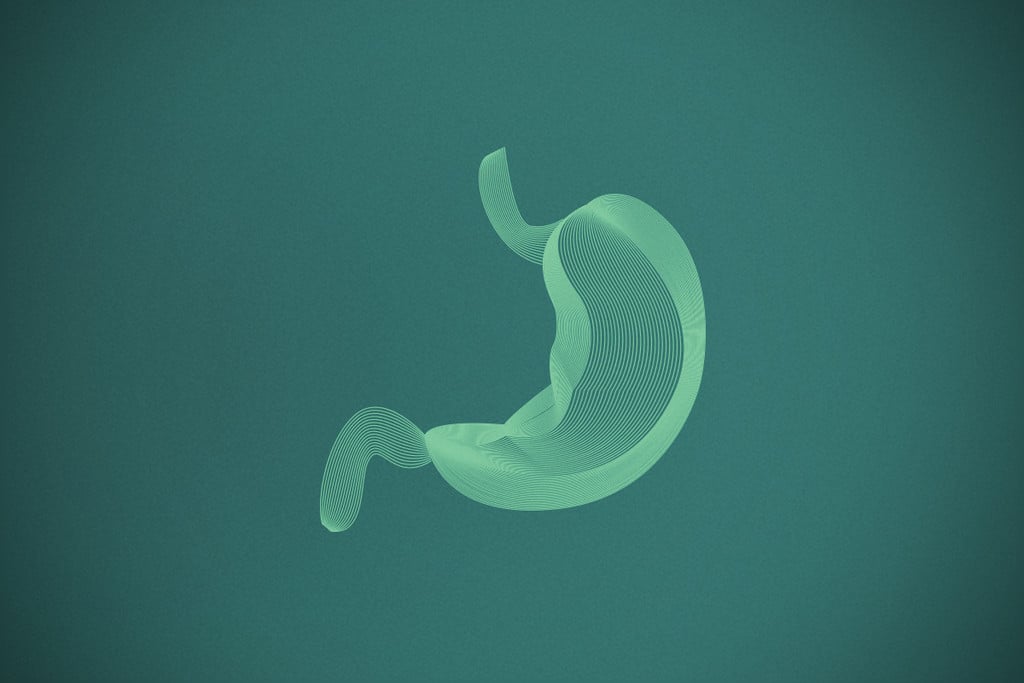.

Can Cannabis Help With Motion Sickness?
Motion sickness makes journeys by land, sea, and air unbearable for some. Nausea and anxiety, headaches, and vomiting all quickly suck the excitement out of road trips and flights to holiday destinations. While some people experience great relief from medications, others may benefit from taking cannabis. Find out how the herb might help.
Contents:
- What is motion sickness?
- What are the symptoms of motion sickness?
- Medications for motion sickness
- Can cannabis help with motion sickness?
- What about cbd for motion sickness?
- How to take cbd or marijuana for motion sickness
- Best cannabis strains for motion sickness
- Medication or cannabis: which should you choose for motion sickness?
Motion sickness sucks. Feeling queasy in general doesn’t exactly thrill most people. But suffering from motion sickness during a road trip or flight to your holiday destination can quickly detract from the experience. Fortunately, we live in the 21st century. Our best minds have developed medicines for most conditions, including motion sickness. However, the effectiveness of these products varies from person to person. Researchers are looking at new options to tackle this condition, including cannabis.
Find out everything you need to know about motion sickness, what causes it, and how cannabis might help.
What Is Motion Sickness?
Motion sickness results from a confused brain. Think about it. We evolved over millions of years, dealing with forces of acceleration that never exceeded our ability to walk, run, and sprint. Suddenly, with the advent of combustion engines, fast cars, winding roads, and jet planes, we exposed our bodies to forces that aren’t exactly natural to us.
We’re not just talking moving fast in straight lines. Whizzing around a bendy country road, experiencing turbulence on a plane, or standing on a rocking boat is the source of motion sickness in a lot of people. These situations cause the brain to get in a muddle. It suddenly can’t make sense of the sensory information coming in from the eyes, ears, and body—this makes some people pretty damn nauseated.
What Causes Motion Sickness?
Our bodies sense motion through various nervous system pathways, including those of the inner ear, eyes, and nerve endings all over the body. During intentional movements, such as walking, all of these signals are in sync. However, during unintentional movements, clashes in sensory input can make individuals nauseated, sometimes to the point of vomiting.
Take sitting in a boat on rough water for example. While staring at the floor, the eyes perceive a static view. But the inner ear senses up, down, and side-to-side movement. This contrasting input confuses the brain and leads to motion sickness.
But the human body possesses buffers to all kinds of environmental stress. When exposed to heat, cold, intense exercise, hunger, or other stressors, the body activates systems that pull us back into homeostasis—a state of physiological balance. Some people can tolerate being flung around on a boat without ever feeling nauseated. Their bodies are likely more efficient at restoring homeostasis when exposed to this kind of stress.


The Role of the ECS in Motion Sickness
Most of the time, our endocannabinoid system (ECS) governs homeostasis. Known as our “universal regulator”, the ECS does a great job at keeping many bodily functions in balance, including mood, memory, and appetite. Because the ECS plays such an important role in the body, it shows up all over the place. The receptors, signalling molecules (endocannabinoids), and enzymes that make up the ECS appear in the nervous system, immune system, skin, bones, gut, and elsewhere.
It turns out the ECS also plays an important role when it comes to motion sickness. You see, our bodies create molecules that are very similar to those found in cannabis. Known as endocannabinoids, these chemicals bind to ECS receptors to create necessary changes inside of our cells. This process may help to prevent the sensation of motion sickness in some people, whereas a malfunction in this mechanism might cause nausea and vomiting in others.
Our bodies contain numerous endocannabinoids, but anandamide and 2-arachidonoylglycerol (hereinafter referred to as 2-AG) are the two main players. Both of these molecules bind to the main receptors of the ECS: cannabinoid receptor 1 (CB1) and cannabinoid receptor 2 (CB2).
Anandamide plays the role of a partial agonist, meaning it only binds to both receptors to a certain degree. However, 2-AG occurs as the most abundant endocannabinoid in the brain and works as a full agonist at both receptors, meaning it binds to them more effectively than anandamide.
-
Key Research Findings
But what do these chemicals have to do with motion sickness? It turns out they're intimately involved in the process. How do we know this? Well, we have researchers from Ludwig Maximilian University in Munich to thank. These individuals exposed human subjects to parabolic flight manoeuvres in an attempt to stoke motion sickness, and then measured their endocannabinoid levels[1].
The research team found interesting correlations between endocannabinoid levels and the tendency of a subject to experience nausea and vomiting. Volunteers that experienced motion sickness showed significantly lower levels of anandamide. However, anandamide levels increased in participants who didn’t experience motion sickness.
2-AG also played a role. Participants who experienced motion sickness had low levels of this endocannabinoid beforehand, and levels stayed consistent throughout the experiment. Participants who didn’t experience motion sickness displayed much higher 2-AG levels in response to the parabolic manoeuvres.
Some researchers also think that a lack of endocannabinoids, known as clinical endocannabinoid deficiency, could underpin several health conditions[2], including migraine, fibromyalgia, and irritable bowel syndrome.
What Are the Symptoms of Motion Sickness?
The symptoms of motion sickness surpass just feeling queasy. They include:
| Nausea | Vomiting | Drooling | Sweating | Dizziness | Pallor (a pale appearance) | Drowsiness | Headache | Yawning |
| Nausea | Vomiting |
| Drooling | Sweating |
| Dizziness | Pallor (a pale appearance) |
| Drowsiness | Headache |
| Yawning |
Factors That Increase the Risk of Motion Sickness
Exposure to turbulent movement can induce motion sickness in a lot of people. But several factors can increase the risk of experiencing symptoms, including:
| Family history of motion sickness | Inner ear disorders | Migraine | Parkinson’s disease | Pregnancy | Menstrual periods | Hormonal birth control |
| Family history of motion sickness | Inner ear disorders |
| Migraine | Parkinson’s disease |
| Pregnancy | Menstrual periods |
| Hormonal birth control |
Medications for Motion Sickness
There are several common medicines prescribed for motion sickness, including:
- Scopolamine: Interestingly, this alkaloid produces a powerful delirious and hallucinogenic effect, and appears in entheogenic plants such as datura. However, small doses delivered through a transdermal pouch placed behind the ear 6–8 hours before travel can help to manage motion sickness symptoms.
- Promethazine: This antihistamine and antipsychotic drug also works well to manage motion sickness when taken two hours before travel. Side effects include drowsiness and dry mouth.
- Cyclizine: This motion sickness medicine has several brand names and works specifically to tackle motion sickness, dizziness, nausea, and vertigo.
Alternative Solutions for Motion Sickness
There are also a number of alternative remedies that can help to minimise the symptoms of motion sickness, including:
| Looking at the horizon | Setting your gaze on the horizon can help to sync the sensory information coming in from your eyes and ears, helping to restore balance. |
| Chewing | Chewing on some gum helps to alleviate the symptoms of motion sickness in some people. |
| Ginger |
Ginger also helps to relieve the symptoms of motion sickness. The herb may also delay the onset of nausea[3]. Several compounds in ginger, namely gingerol and zingerone, also interact with the endocannabinoid system[4]. |
| Acupressure |
Many people remain sceptical about this non-needle form of acupuncture, but some evidence suggests it might help to counter the symptoms of motion sickness. |
| Looking at the horizon |
|
Setting your gaze on the horizon can help to sync the sensory information coming in from your eyes and ears, helping to restore balance. |
| Chewing |
|
Chewing on some gum helps to alleviate the symptoms of motion sickness in some people. |
| Ginger |
|
Ginger also helps to relieve the symptoms of motion sickness. The herb may also delay the onset of nausea[3]. Several compounds in ginger, namely gingerol and zingerone, also interact with the endocannabinoid system[4]. |
| Acupressure |
|
Many people remain sceptical about this non-needle form of acupuncture, but some evidence suggests it might help to counter the symptoms of motion sickness. |
Can Cannabis Help With Motion Sickness?
So, does weed help with motion sickness? Unfortunately, there are no clinical trials to provide a clear-cut answer to this question—a common consequence of decades of prohibition and research barriers. However, there are studies involving cannabis that offer some indication of how it might affect the condition.
Cannabis flowers produce over 100 phytocannabinoids (“phyto” means “plant”). Because these molecules share a similar structure with our endocannabinoids, some phytocannabinoids can bind to ECS receptors. Take THC; this psychotropic phytocannabinoid happily binds to both CB1 and CB2.
Remember when we touched on endocannabinoid deficiency above? Well, cannabinoids are being explored for their ability to manage symptoms tied to this phenomenon. Researchers believe that THC could theoretically make up for a lack of anandamide and 2-AG. After all, it binds to the same receptors, so our body could potentially use THC (or CBD—more on that later) to catalyse homeostatic changes when there are not enough endocannabinoids floating around.
Nausea
Researchers have long explored the effects of cannabis on nausea. These findings led to the creation of Dronabinol, a synthetic version of THC prescribed for chemotherapy-induced nausea and vomiting in the United States. Ongoing studies are continuing to explore the role of phytocannabinoids in preventing nausea and vomiting, and how they impact the ECS to produce this effect. The molecules of interest include the cannabinoids THC and CBD, and the cannabinoid acids THCA and CBDA.


Headache
Headache emerges as a common symptom of motion sickness and—surprise, surprise—the endocannabinoid system may play a role in this condition. Researchers are currently exploring how cannabis might help to both prevent and treat headaches. Some data also suggest that headaches might arise from a deficiency in endocannabinoids.

Anxiety
As people start to feel motion sickness set in, they may experience feelings of anxiety and dread that make the situation a whole lot worse. Cannabis might help to trim away these feelings and make the experience more tolerable. Ongoing studies are investigating the effects of THC and CBD on anxiety, and a few human studies have shown the effects of CBD on brain regions associated with the condition.

Can Cannabis Make Motion Sickness Worse?
People exhibit what’s called a biphasic dose-response to THC. A small amount might help to curb the negative impact of motion sickness symptoms, whereas much higher doses can lead to stomach discomfort or “greening out”.
An anectodal minority of chronic cannabis users could also experience cannabis hyperemesis syndrome (CHS). This condition results in a toxic reaction to THC and subsequent cyclic vomiting that can sometimes lead to hospitalisation.
What About CBD for Motion Sickness?
CBD products are everywhere these days. Anecdotal accounts praise the effects of the cannabinoid, and research continues to explore the potential of CBD in a range of conditions, from anxiety to acne. But can we add motion sickness to the list of maladies that CBD can assist with?
Introducing FAAH
CBD is studied concerning motion sickness symptoms and its connection with the ECS. Unlike THC, CBD doesn’t bind very strongly to CB1 and CB2. However, it does impact enzymes that degrade our own endocannabinoids. To make sense of this, we need to turn our attention to a key ECS enzyme.
Fatty acid amide hydrolase (FAAH) plays a metabolic role within the ECS. Its task? To break down anandamide after the molecule has fulfiled its function. CBD inhibits FAAH[5]. This means it temporarily stops the enzyme from doing its job. By interrupting the breakdown of anandamide, CBD raises the levels of this endocannabinoid—a state associated with reduced motion sickness symptoms.
Messing with FAAH might also have an impact on headaches associated with motion sickness. Researchers state that the inhibition of FAAH presents a promising corrective avenue[6] for the treatment of headaches.
Sure, CBD doesn’t bind to the primary ECS receptors, and though CB1 and CB2 get a lot of attention, the ECS also consists of other receptor types. Known among ECS researchers as CB3, transient receptor vanilloid 1 (TRPV1) belongs to the so-called expanded endocannabinoid system, and might play a role in relieving motion sickness[7]. CBD binds to this site, making it an intriguing tool with which to observe TRPV1’s potential.
How To Take CBD or Marijuana for Motion Sickness
There are plenty of different ways to take CBD or weed for motion sickness. Some of the most common products include:
| Flower | Concentrates | CBD oil or cannabis oil | Gummies | Chewing gum | Capsules |
| Flower | Concentrates |
| CBD oil or cannabis oil | Gummies |
| Chewing gum | Capsules |
If you’re prone to motion sickness, you can get CBD or THC products just before a journey and see if it helps. However, you should keep in mind the varying onset of different products. Oral (swallowed) products such as capsules take a good 30 minutes to set in. In this way, they serve as a good preventative measure.
In contrast, taking oil under the tongue (sublingual) or vaping flowers provides an immediate onset. These products are good reactive measures that act quickly when you feel symptoms creeping in.
Best Cannabis Strains for Motion Sickness
There’s also the option of growing your own herb to combat motion sickness. Because both THC and CBD influence the ECS in distinct ways, strains that contain good levels of both molecules are likely the best option. These cultivars include:
- Royal Highness: Contains high levels of CBD, THC levels of 14%, and earthy and fruity terpenes.
- Royal Medic: Offers good levels of both THC and CBD alongside rewarding yields.
- Medical Mass: Enjoy THC and CBD alongside tastes of candy and fruit.
Medication or Cannabis: Which Should You Choose for Motion Sickness?
It depends. Conventional motion sickness pills and cannabis produce different effects in different people. Some people respond extremely well to medications such as scopolamine, whereas others experience side effects. Though certain individuals may find cannabis helpful, others may fail to respond. However, as research moves forward, we may stumble across other cannabinoids, terpenes, and phytochemical blends that work more effectively than currently available drugs. We’ll have to wait and see!
- Motion Sickness, Stress and the Endocannabinoid System https://journals.plos.org
- Europe PMC https://europepmc.org
- Effects of ginger on motion sickness and gastric slow-wave dysrhythmias induced by circular vection https://journals.physiology.org
- (PDF) Beyond Cannabis: Plants and the Endocannabinoid System https://www.researchgate.net
- Cannabidiol enhances anandamide signaling and alleviates psychotic symptoms of schizophrenia https://www.ncbi.nlm.nih.gov
- Frontiers | Endocannabinoid System and Migraine Pain: An Update | Neuroscience https://www.frontiersin.org
- Targeting TRPV1 to relieve motion sickness symptoms in mice by electroacupuncture and gene deletion | Scientific Reports https://www.nature.com







































